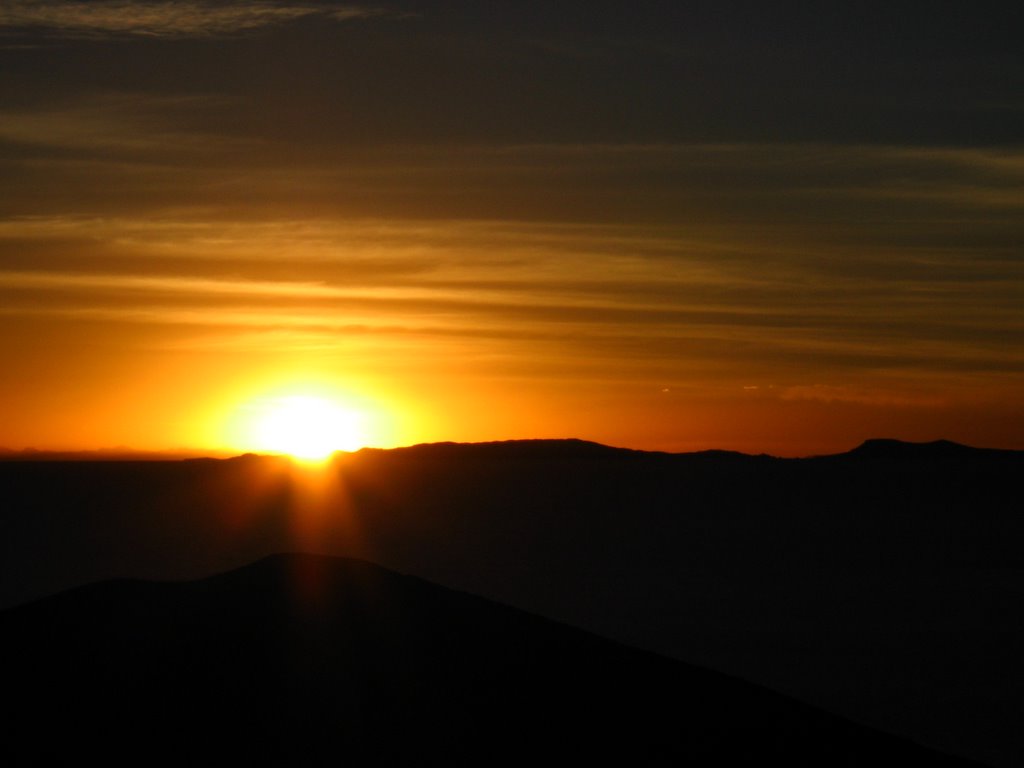Planets, Comets, Meteor Showers, Natural Phenomena, Fractals
Have questions or answers about upcoming meteor showers or comets? What are the planets doing now? Know any facts about natural phenomena for natureinfo.blogspot.com? For example, those colored patterns above the horizon that appear to be mini rainbows are sun dogs, and are caused when light from the sun near the horizon is refracted by ice crystals in the atmosphere. They're also called "mock suns," or technically, "parthelia." Learn about and view fractals under here, too.
Labels: natural phenomena


4 Comments:
Are you intrigued by FRACTALS? (Geometric shapes or objects that are self-similar and look the same, no matter how closely you view them.) As an example in nature, fractals would include trees and clouds. Our lungs are fractals, too. When you look at a small section of them, you’ll see a similar, but not necessarily identical, appearance of their full shape. Gayla’s site ...of a fractal nature has an extensive array of information on fractals, and photographed samples. I also recommend you visit her BUTTERFLY GALLERY, under her link for “plus.”
Check out MERCURY, VENUS and SATURN now. The end of this month, June 2005, will be your last chance to see them together until December of 2044!
Don’t forget to WATCH THE PERSEID METEOR SHOWERS THIS WEEK! (Aug. 7-12) They’re in the northeast, where you see the sprawling “W” in the sky at night. Best time to view them is between 2 to 5 a.m., but I’ve seen plenty of shooting stars between 10:00 and midnight over the years. And they’re not always within that “W”… often to the left or right, or above it or underneath, so let your eyes rove.
The shower peaks on Friday morning, Aug. 12, but you’ll still be able to see some for a few more days. This year the moon will have already set after midnight all this week, so for once we’ll have dark skies.
Got this from Mike Lynch, in his “Skywatch” column in the St. Paul Pioneer Press (I did a bit of editing, though):
Meteors are actually grains of dust and pebbles; while the whoppers may be the size of small walnuts. This is all debris left behind by comets that have passed by the Earth and our sun. Comets are basically dirty snow/ice balls that partially melt when they get close to the sun. Debris is left in the wake, and gravity between the particles keeps the debris trail intact. The debris that causes the Perseids is from the comet Swift-Tuttle, which comes by this part of our solar system about every 130 years. Tiny pieces slam into our atmosphere at speeds exceeding 40 miles per second, incinerating them before they can get near us.—Mike Lynch
So go somewhere away from the city lights, lie down on your back on a lawn chair, or even the hood of your car, cover yourself with a blanket to fend off those noisy skeeters, and enjoy the show! (posted 8/7/05)
What's I think is tough is knowing which lens to use, but we have seen Saturn and its rings. The real challenge is viewing the moon, because when you're looking through a telescope, it travels out of your view pretty darned fast!
Post a Comment
<< Home